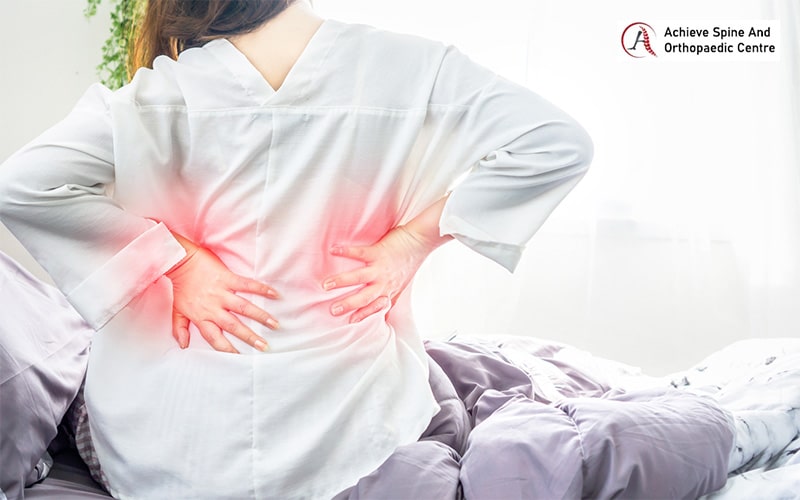Many people struggle with spine, lower back, and neck pain at some point. For some, it’s a mild discomfort that comes and goes, while for others, the pain can be debilitating, severely affecting their ability to perform daily activities. Whether it’s a constant ache or a sharp, sudden pain, these issues can greatly impact one’s quality of life.
In this article, we explore what causes back and neck pain and what you can do to relieve it.
Understanding spine, lower back, and neck pain
Spine, lower back, and neck pain often stems from the complex structure of the spine and discs that support and allow movement.
Poor posture, injuries, and degenerative conditions can all contribute to pain in these areas. Individuals with such conditions should take proactive steps to manage their pain, treat it, and improve their quality of life.
Symptoms and Causes
To treat pain in the spine, lower back, and neck appropriately, their underlying causes must be identified.
Spine
The spine is a complex structure consisting of vertebrae, discs, nerves, and muscles that all work together to support your body and allow movement. Pain in the spine can manifest as:
- Chronic aching: Persistent pain that may extend from the neck down to the lower back.
- Sharp pain: Sudden, intense pain that may worsen with certain movements.
- Stiffness: Difficulty in moving or bending the spine.
- Numbness or tingling: Sensations that may radiate to other parts of the body, such as the arms or legs.
Common causes of spine pain include:
- Degenerative disc disease: Natural wear of the discs between the vertebrae.
- Herniated disc: A condition where the disc’s inner gel-like core protrudes, irritating nearby nerves.
- Spinal stenosis: Constriction of the spinal canal, pressing on the spinal cord and nerves.
- Osteoarthritis: A type of arthritis that impacts the joints in the spine, giving rise to pain and stiffness.
- Spondylolisthesis: A condition where one of the vertebrae slips out of place, usually forward over the bone below it.
Lower back
Lower back pain is a widespread issue, often resulting from lifestyle factors, injuries, or underlying medical conditions. Symptoms may include:
- Dull, aching pain: A persistent ache that may worsen with prolonged sitting or standing.
- Shooting pain: Sharp pain that radiates down the leg, often associated with sciatica.
- Muscle spasms: Involuntary contractions that can cause severe pain and limit movement.
- Limited flexibility: Difficulty in bending or moving the lower back.
Causes of lower back pain include:
- Muscle or ligament strain: Overexertion, improper lifting, or sudden movements can strain muscles and ligaments.
- Bulging or ruptured discs: Discs that act as cushions between vertebrae can bulge or rupture, putting pressure on nerves.
- Osteoporosis: A condition that weakens bone integrity, making them more susceptible to fractures.
- Poor posture: Sitting or standing with improper alignment can stress the lower back.
Neck
Neck pain can range from mild or severe, debilitating pain, often affecting mobility and daily activities. Symptoms of neck pain include:
- Stiff neck: Difficulty in moving the head from side to side.
- Sharp or stabbing pain: Intense pain that may be localised or radiate to the shoulders and arms.
- Headaches: Pain that originates in the neck and spreads to the head.
- Tingling or numbness: Sensations that may extend down the arms.
Causes of neck pain include:
- Muscle strain: Often caused by poor posture, such as hunching over a computer or sleeping in an uncomfortable position.
- Cervical spondylosis: Age-related wear of the cervical spine, leading to pain and stiffness.
- Whiplash: A sudden jerking motion, often due to a car accident, that strains the neck muscles and ligaments.
- Herniated disc: A disc in the cervical spine that slips out of place, pressing on nearby nerves.
Treatment options
Treatment for spine, lower back, and neck pain varies according to the severity and root cause. Both non-surgical and surgical options are available.
Non-surgical
Non-surgical treatments are often the first line of defence in managing spine, lower back, and neck pain. They are non-invasive and can be highly effective.
- Physical therapy: Programmed exercises and stretches can help strengthen muscles, improve flexibility, and alleviate pain.
- Medications: Over-the-counter pain relievers can reduce inflammation and relieve pain. In some cases, prescription medications may be necessary.
- Heat and cold therapy: Applying heat on skin can soothe muscles and improve blood flow, while cold therapy can ease inflammation and numb the pain.
- Chiropractic care: Spinal adjustments by a licensed chiropractor can help align the spine, providing pain relief.
- Acupuncture: Thin needles are lightly inserted into specific points on the body to relieve pain.
- Massage therapy: Therapeutic massage can ease muscle tension, improve circulation, and reduce pain.
Surgical
Surgery is typically recommended for spine, lower back, and neck pain when non-surgical treatments have not provided sufficient relief and the pain significantly impacts your quality of life.
Advances in medical technology has made minimally invasive spine surgery an increasingly popular choice. Compared to traditional open surgery, it involves tiny incisions, less skin damage, and faster recovery times. It is often used for procedures like discectomy, spinal fusion, and laminectomy.
When to seek medical attention
While mild pain can often be managed at home with exercises and other methods, there are certain situations where professional help is necessary:
- Persistent pain: If the pain doesn’t improve with rest or over-the-counter medications.
- Radiating pain: Pain that radiates to the arms or legs, accompanied by numbness, tingling, or weakness.
- Severe pain: Sudden, intense pain that disrupts daily activities or sleep.
- Loss of bowel or bladder control: An indication of a severe condition that requires immediate medical attention.
- Injury: Pain following an accident or fall should be evaluated by a spine specialist.
- Pain associated with weakness, numbness: If the pain is accompanied by weakness or numbness in the arms, legs, or other areas, it may indicate nerve compression or damage, which should be assessed by a medical professional.
- Fever, chills and rigors associated with back or neck pain: These symptoms may signal an infection in the spine, such as discitis or osteomyelitis, which requires immediate medical evaluation and treatment.
- Loss of weight and appetite: Unexplained weight loss and a decrease in appetite alongside spine pain could be a sign of a more serious underlying condition, such as cancer or an infection, warranting urgent medical attention.
Get treatment for spine, lower back, and neck pain in Singapore
Spine pain, lower back pain and pain in the neck can impact your physical activities. However, they can be treated and managed to improve your quality of life.
At Achieve Spine & Orthopaedic Centre, we understand how debilitating spine, lower back, and neck pain can be. Our director, Dr Wu, will provide comprehensive care tailored to your specific needs. We offer non-surgical and minimally invasive surgical spine treatments.
To learn more about spine and neck pain treatment, schedule an appointment with us today.



